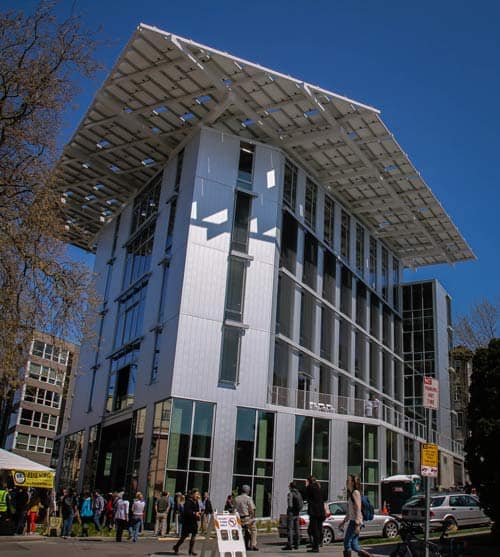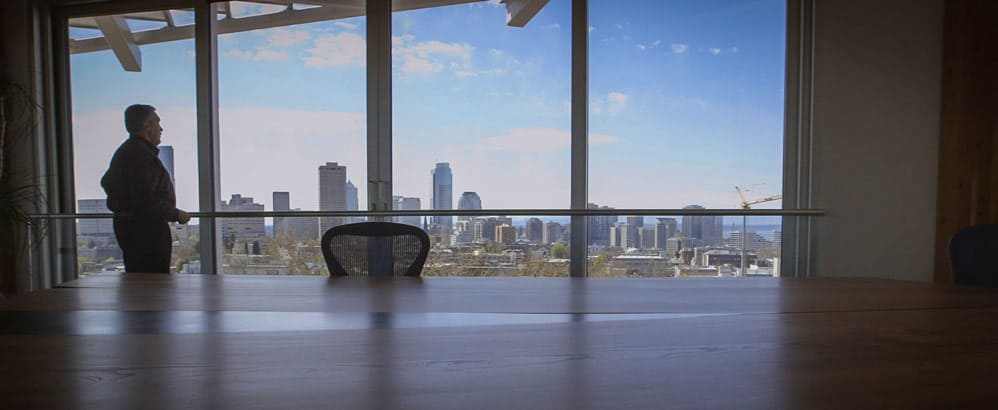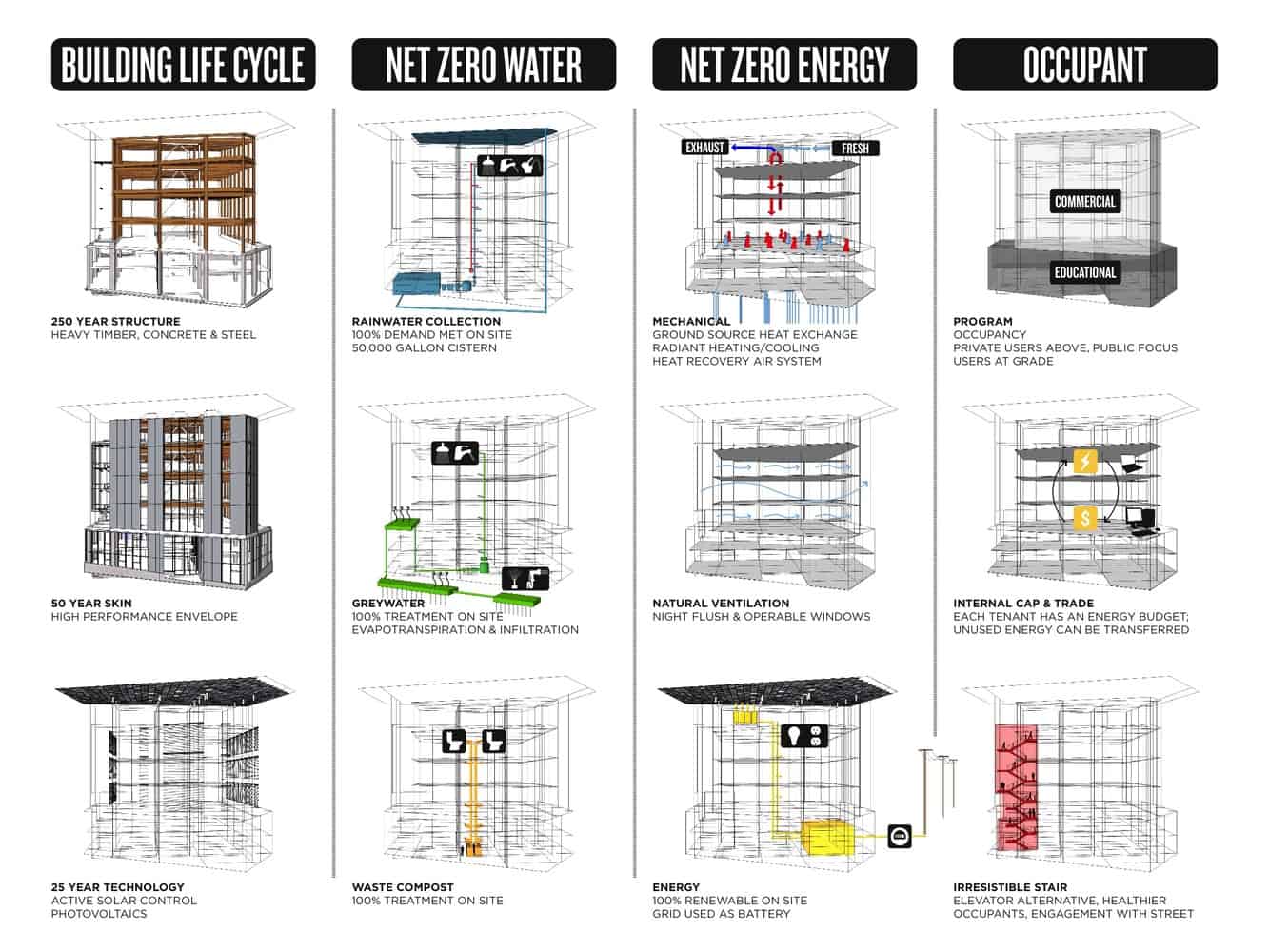This Earth Day, the Bullitt Center in Seattle celebrated its fifth anniversary. That may not seem like a huge milestone for many iconic buildings, but at the time of its construction, five years of success was no guarantee.
The designers of the Bullitt Center had the audacious goal of building the world’s greenest commercial building. Creating a building that lives up to the world’s strictest green building standards is difficult enough, but would enough companies be interested in it to keep the building occupied?
The Bullitt Center has not only answered that question by being one of the most in-demand office buildings in Seattle, but it’s also become a standard-bearer for green building worldwide.

A Living Building
The concept of a Living Building, as outlined by the International Living Future Institute, was relatively new at the time of the Bullitt Center’s grand opening in 2013.
“The Living Building Challenge really is inspired by this vision that buildings can give more than they take from the world,” said Greg Norris, chief scientist of the International Living Future Institute. “That basically when we build a building that is a Living Building, we are not creating a habitat at some cost to the planet. We’re actually creating a building that’s going to enrich the future in many ways, environmentally, socially, human health and well-being.”
The Living Building Challenge is based on seven certifications called petals: place, water, energy, health and happiness, materials, equity, and beauty.
For a building to earn a petal, it must achieve excellence in that petal’s “imperatives,” and in some cases can only earn and keep a petal if the objectives are met for more than one year.
For instance, to earn the water petal, the building must collect more water than it uses for a year, and must sustain that net-positive water usage to keep it. The same applies to the energy petal.
Other petals can be earned during the design and building phases. The materials petal, for instance, is earned for using local and eco-friendly materials that don’t contain any “worst-in-class” chemicals from the ILFI’s Red List.
With those strict guidelines as the base, the Bullitt Center project team had an uphill battle to fight, especially for a downtown commercial building. But they had a plan to help them achieve Living Building status.

Greener Materials
One of the biggest challenges facing the Bullitt Center project team was finding Red-List-free materials. Because a Living Building of this size had not before been attempted, known materials were limited for a project of this scope. The Bullitt team had to seek out new materials and find manufacturers willing to amend their product formulations to comply with the Red List. In one well-known case, the team was able to convince PROSOCO to change the formulation of its fluid-applied air and water barrier material to comply with the Red List.
The Bullitt Center also had some physical limitations that made the project difficult. Many Living Buildings use the surrounding land to collect rainwater and dispose of grey water, both important components to the water petal. The Bullitt Center didn’t have that luxury. They had to create a very complex and efficient water collection system on the roof and work with the city to install an underground cistern directly under the building.
Five Years Later
In 2018, the Bullitt Center team celebrated five years, a milestone few could have imagined when they were in the planning phase.
“[The Bullitt Center] is one of those incredibly rare projects that has exceeded everyone’s dreams for it when we first took off,” said Bullitt Foundation President Denis Hayes during a celebration on Earth Day, 2018.
The Bullitt Center today is still the only six-story, net-zero-energy building in the world. It uses 1/5 the energy of a commercial building built to code, and just 5% of the average water use of commercial buildings in Seattle. Most importantly, it serves as proof-positive that the Living Building concept can work, even in commercial cases.
Others have followed suit. Large companies like Google and Apple built their new campuses to meet or exceed green standards, even if they aren’t quite as strict as the Living Building Challenge. Smaller companies like Etsy are achieving petal certifications for their office buildings and plan to seek full Living Building certification in the future. This movement gained traction largely because of the Bullitt Center, and it is gaining more and more momentum every year.
For the Future
Five years is an impressive achievement, but the Bullitt Center was designed for a much longer service life. Project teams must prepare and plan for the complicated systems in place to eventually need repairs or even fail. Of course, the architects had a plan for that too.

The building is built upon a skeleton designed to last 250 years or more. The envelope is designed to last 50 and the solar system 25, but there is a replacement plan in place for both systems. Each detail is designed with longevity in mind so that the goals of net-zero water and energy are achievable for the full service life of the building.
The Bullitt Center has been an icon in the green building community for the last five years. But because these systems are in place and the Bullitt Center was built to last, it will continue to be so for the rest of our lives as well as generations to come.
![]()